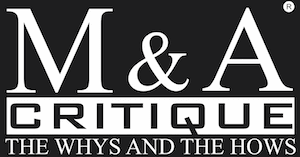Tata Daewoo going strong; lines up growth plans
Tata and Daewoo trucks parked outside the Tata Daewoo Commercial Vehicle Company’s plant in Gunsan, about 250 km southwest of Seoul. – N. Ramakrishnan
Recently in Gunsan (S. Korea)
A good four-hour drive along a smooth highway – about 250 km – from Seoul takes us to Gunsan. Mr Anurup Chatterjee, General Manager (Sales and Marketing), Tata Daewoo Commercial Vehicle Company Ltd, who is accompanying a team of Indian journalists on the bus, explains the dynamics of the Korean commercial vehicle market – one in which Tata Motors has taken a step through acquisition of Daewoo’s commercial vehicle business two years ago.
The Korean commercial vehicle market is different from that of India, says Mr Chatterjee. The emphasis is on powerful engines, as speed is of the essence on Korean roads. In India, speed is not an issue but the carrying capacity of the trucks is.
The signboards at Tata Daewoo’s plant at Gunsan, southwest of Seoul, are in Korean. A `Century of Trust’ exhibition (one that the Tata group had organised in India too) is on to explain to the Korean employees the heritage of the Indian company that acquired Daewoo.
Mr Kwang-Ok Chae, President & CEO, Tata Daewoo Commercial Vehicle Company Ltd, and other senior officials including Mr Chandra Vir Singh, Vice-President, and Mr Menon S.U.K., Vice-President (Finance & Business Planning), greet the visiting mediapersons warmly. After exchanging cards it is down to business, with the officials explaining the company’s operations and strategy.
Into MCV segment
Tata Daewoo operates predominantly in the heavy commercial vehicles (HCV) segment.
In January this year, it entered the medium commercial vehicles (MCV) segment, a segment dominated by the Hyundai-Kia Automotive Group.
By October, Tata Daewoo had garnered 25 per cent market share in this segment, company officials said. The MCV segment is estimated at 12,000 units a year.
The officials also said that in the two years since Tata Motors acquired Daewoo and renamed it Tata Daewoo, the HCV segment has shrunk in size – from 15,000 units in 2003-04 to about 10,000 this year.
Besides Tata Daewoo and Hyundai-Kia, there are five European manufacturers operating in this segment.
LCV foray
In contrast, the light commercial vehicle (LCV) segment is growing and is estimated at 200,000 units a year.
Tata Daewoo plans to enter this segment in 2008. It will have to make additional investment, according to Mr Singh, but that will be done closer to the actual date of launch.
Mr Singh also said that Tata Daewoo hopes to sell about 10,000 vehicles this year – 3,000 HCV units in the Korean market and 3,000 in the export market, and about 3,000 MCV units in the domestic market.
The company exports about 700 HCV knocked-down kits to India, where Tata Motors assembles them at its Jamshedpur plant.
A tie-up with a company in Karachi will see Tata Daewoo exporting HCV kits to Pakistan; it also plans to launch these trucks in Vietnam and Russia. It is in talks with a company in Vietnam to assemble the trucks, Mr Singh said.
To a query, Mr Singh said that LCV units cannot be sold in Korea under the Daewoo brand name. Tata Daewoo’s plant rolls out trucks even now under both the Daewoo and Tata brands.
Significant growth
Mr Chae said that after Tata Motors acquired the company, exports have grown substantially – from 360 vehicles a year to about 3,000 now. South Africa is a large export market followed by West Asia.
According to Mr Menon, the demand in the Korean market for HCV units is mainly for replacing aged vehicles.
Nearly 95 per cent of the Korean HCV market is owner-driven, which means that the buyers ask for "creature comforts" in the cabin on a par with that of a sedan.
The company has invested substantially in improving its IT infrastructure and computer-aided design facilities. Tata Daewoo had also developed an LNG-powered truck jointly with Korean Gas.
Mr Menon said that the strengthening won was a cause for concern. When Daewoo Heavy Commercial Vehicles came under the Tata fold, a dollar was worth 1,150-1,170 won. Today, its value is 940-950 won.
"The strengthening won could affect competitiveness," he said, adding that the integrated cost management adopted by Tata Motors and Tata Daewoo would help.
In 2004-05, Tata Daewoo clocked turnover of $300 million, which increased to $370 million the next year. Profit after tax rose from $5.2 million to $14 million during this period. In the first half of the current fiscal, the company posted net profit of $11 million on turnover of $225 million, Mr Menon said.
Source:
